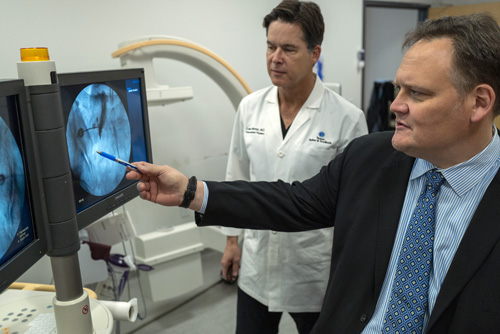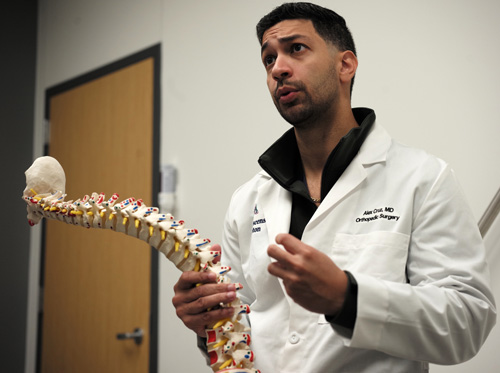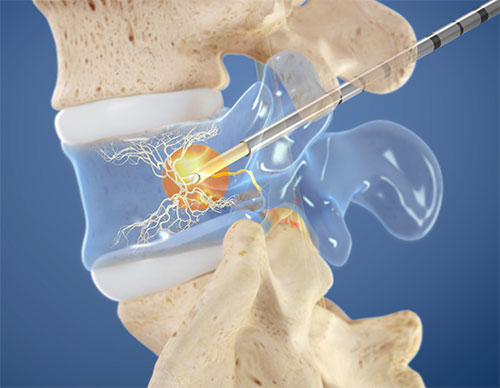
Learn about the shock-absorbing discs that separate the bones in the spine.
 About 4 of 5 adult Americans will experience back pain at some point in their lives. The good news is that for most of those the back pain episode is acute, meaning it will go away on its own over a few days, with some anti-inflammatory medication or other non-surgical treatment like spine therapy or spinal injections. So the vast majority of simple acute back pain can go away over a week or so. "Subacute back pain" is defined as pain that lasts one month to four months.
About 4 of 5 adult Americans will experience back pain at some point in their lives. The good news is that for most of those the back pain episode is acute, meaning it will go away on its own over a few days, with some anti-inflammatory medication or other non-surgical treatment like spine therapy or spinal injections. So the vast majority of simple acute back pain can go away over a week or so. "Subacute back pain" is defined as pain that lasts one month to four months.
"Chronic low back pain" relates to a person whose back pain symptoms have persisted for for four months or more.
According to the National Institutes on Health, about 1 in 5 people who experience acute low back pain can develop chronic low back pain with persistent symptoms that last a year or more.
In some cases, treatment successfully relieves chronic low back pain, but in other cases pain persists despite medical and surgical treatment.
Chronic low back pain is a common and debilitating problem. About 6 million adults suffer from recurrent low back pain — often affecting adults aged 65 and older. When low back pain persists for six months or more, it can cause a person to become sedentary and de-conditioned. When muscles and ligaments become de-conditioned they become more susceptible to strain, which causes a vicious disability spiral where less activity leads to more risk of back strain and discomfort. 
In 1990, a study ranking the most troublesome conditions in the United States put low back pain in sixth place; in 2010, low back pain jumped to third place, with only ischemic heart disease and chronic obstructive pulmonary disease ranking higher.
When back pain becomes chronic, it can become difficult to resolve, especially when diagnostics tests fail to reveal an obvious source of the pain like a herniated disc or bone spur. Experts theorize that pain pathways can become sensitized so that minor strain telegraphs pain through the spinal cord into the brain.
Other times when a herniated disc or vertebral problem is treated successfully, pain can persist. Some experts believe that for some people, even after an injury has been treated and diagnostic tests indicate the problem has healed, sensitized pathways continue to transmit pain signals to the brain.
These pain signals can feel just as intense as the original back injury. Some researchers believe this resembles a TV or computer screen that has had an image burn in to the screen. In that sense, for some people, the pain pathway continues to send pain signals even after treatment.
 While medications can provide some relief of chronic low back pain, dependence on drugs can have damaging side effects on internal organs, which can shorten a person’s lifespan.
While medications can provide some relief of chronic low back pain, dependence on drugs can have damaging side effects on internal organs, which can shorten a person’s lifespan.
There are a variety of nonsurgical treatment options provided by Texas Spine and Scoliosis for chronic low back pain, which are covered in this Internet site. That can include spine therapy, spinal injections and the Intracept procedure.
For more information about the Intracept nonsurgical procedure, click here.
[Top]